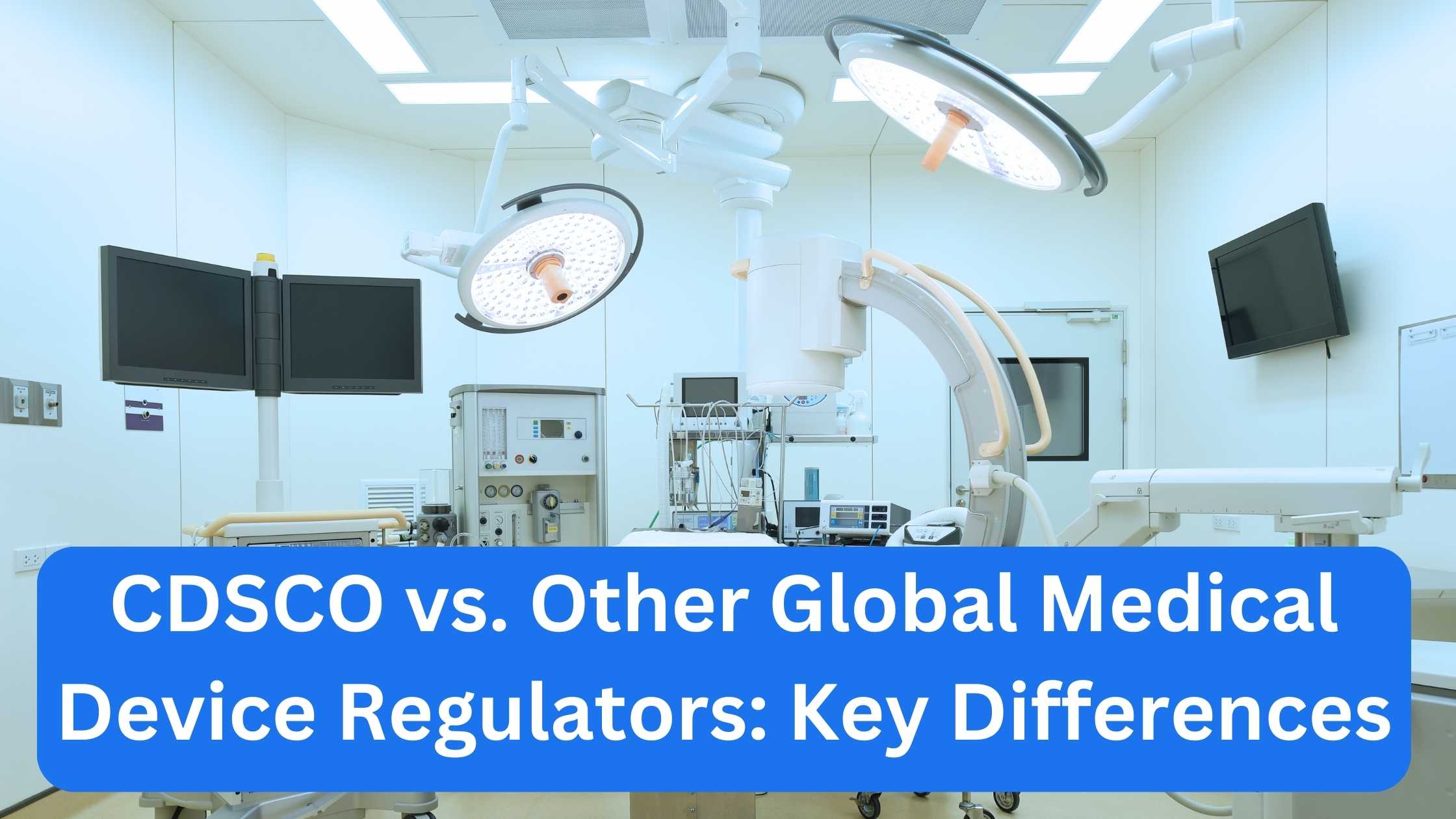When it comes to medical devices, every country has its own regulatory system to ensure safety, quality, and effectiveness. In India, the Central Drugs Standard Control Organization (CDSCO) is the main authority responsible for regulating medical devices, drugs, and cosmetics. But how does CDSCO compare to other global regulators like the U.S. Food and Drug Administration (FDA), the European Medicines Agency (EMA), and China’s National Medical Products Administration (NMPA)? Let’s explore the key differences.
1. Regulatory Scope and Authority
CDSCO (India)
CDSCO regulates medical devices, drugs, and cosmetics under the Drugs and Cosmetics Act, of 1940. It provides approvals for:
CDSCO Medical Device Registration (for locally manufactured and imported medical devices)
CDSCO Medical Device Import License (for foreign-made devices)
CDSCO Drugs Import License (for pharmaceuticals)
CDSCO Cosmetic Import Registration (for foreign cosmetic products)
CDSCO Cosmetic Manufacturing License (for local production)
FDA (USA)
The FDA oversees medical devices under the Federal Food, Drug, and Cosmetic Act (FDCA). It has a three-tier classification system based on risk levels (Class I, II, III), and companies must undergo a 510(k) premarket notification or Premarket Approval (PMA) for higher-risk devices.
EMA (European Union)
The EMA does not directly regulate medical devices but works alongside national regulators. Devices must comply with EU Medical Device Regulation (MDR) and undergo approval via Notified Bodies, which issue CE Marking certification.
NMPA (China)
China’s NMPA regulates medical devices under a three-tier classification system like the FDA. Foreign manufacturers must appoint a local agent and undergo clinical evaluations for higher-risk devices.
2. Medical Device Classification
Each regulator classifies devices based on risk:
- CDSCO: Class A (low risk), Class B (moderate risk), Class C (high risk), Class D (critical risk)
- FDA: Class I (low risk), Class II (moderate risk), Class III (high risk)
- EMA: Class I, IIa, IIb, III (similar to CDSCO)
- NMPA: Class I (low risk), Class II (moderate risk), Class III (high risk)
3. Approval Process
CDSCO Approval Steps
- Medical Device Classification: Determine the class of the device.
- Apply for CDSCO Medical Device Registration: Local manufacturers must obtain approval; foreign companies need a CDSCO Medical Device Import License.
- Clinical Evaluation: Higher-risk devices may require clinical trials.
- Manufacturing or Import License: Based on whether the device is made in India or imported.
FDA Approval Process
- Class I and II devices typically go through 510(k) premarket notification.
- Class III devices require Premarket Approval (PMA), including clinical trials.
EMA Approval Process
- Devices must comply with EU MDR.
- Approval is given by Notified Bodies through CE Marking.
NMPA Approval Process
- Local testing in China is required for many foreign devices.
- Clinical trials may be necessary for Class II and III devices.
4. Import and Manufacturing Regulations
CDSCO manages both medical device and cosmetic imports and manufacturing. Some key points:
CDSCO Medical Device Import License is mandatory for foreign-made devices.
CDSCO Drugs Import License is needed for pharmaceuticals.
CDSCO Cosmetic Import Registration is required for foreign beauty and personal care products.
CDSCO Cosmetic Manufacturing License is necessary for Indian companies making cosmetics.
5. Post-Market Surveillance
Once a medical device is approved, regulators monitor its safety:
- CDSCO: Requires manufacturers to report adverse events and maintain quality compliance.
- FDA: Implements a Medical Device Reporting (MDR) system.
- EMA: Uses Post-Market Clinical Follow-up (PMCF) to track safety.
- NMPA: Conducts surprise inspections and requires companies to maintain quality data.
Conclusion
While CDSCO, FDA, EMA, and NMPA all aim to ensure medical device safety, they have different approval processes and requirements. CDSCO is catching up with global standards, making CDSCO medical device registration, import, and manufacturing licenses essential for businesses operating in India. Companies looking to expand internationally must understand these differences to ensure smooth regulatory approvals.
Source: https://www.bigbizstuff.com/2025/02/17/cdsco-vs-other-global-medical-device-regulators-key-differ/









